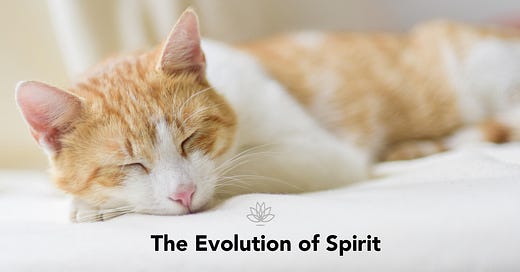Growing up with cats, I never lacked for quiet companionship. Not to mention the opportunity to observe such brazenly insouciant behavior. Affectionate aloofness packaged into an adorable fluff of fur.
I was particularly intrigued by their seemingly excessive somnolence. Up to fifteen hours per day spent sleeping - to what end? Clearly some non-discarded evolutionary trait passed down from their fierce, roaring ancestors of six million years ago. The intense energy demanded of chasing, capturing, and consuming prey - not to mention digesting carnivory calories - required much recharging.
The only thing our house cats determinately pursued was each other and laser pointers. Yet sleep they did. Curiously, though, not very deeply. Seemingly both asleep and awake at the same time.
Close, but not quite. Felines have such finely tuned senses of hearing and smell that the slightest variation stirs their awareness. Which enables them to rapidly transition between rest and responsiveness.
There are, however, certain species of animals that can indeed sleep and actively function at the same time. It’s known as unihemispheric slow-wave sleep. Unihemispheric in that one half of the brain is completely asleep while the other half is fully alert. Typically with one eye open and the other closed. This unique physiology is what allows birds, dolphins, and whales to sleep while they are migrating. The open eye ever alert to threat. The shut eye part of slumber.
This fascinating phenomenon provides an apt analogy for practicing a transcendent thought system such as A Course in Miracles. A key to spiritual growth is extracting part of awareness out of the experiencing self and into a formless, non-judgmental presence.
And so we encounter stimuli and all its concomitant constituents including assessment, analysis, and response - while simultaneously objectively observing the unfolding drama.
Like unihemispheric slow-wave sleep contributing to the evolution of species, intentionally cultivating this multi-modal awareness can greatly aid in the evolution of spirit.
So how do we practice this form of single-minded serenity?
By taking each harboring form of discontentment and allowing the body to do whatever it deems necessary for the situation. Perhaps rumination, emotional flooding, and some sort of reaction. In parallel, shift part of awareness into a witnessing presence that simply looks at the experiencing self with gentleness, with kindness, with a light-heartedness, and without judgment.
This is the essence of John’s passage, being in the world but not of it.
Similarly, as we read in A Course in Miracles:
You who were created by love like itself can hold no grievances and know your Self. Every grievance insists that the body is real. (W-pI.78,72)
Both eyes open while simultaneously sensing the “tremendous release and deep peace” that comes from practicing this form of integrated attentionality.
Join me in Thursday’s class where we’ll discuss the nature of spiritual awakening and the path toward less pain and more peace. I look forward to seeing you then.




